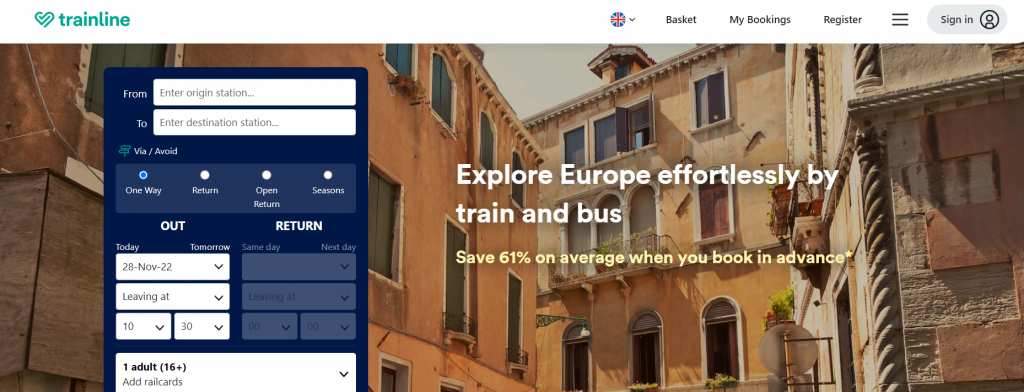Traveling is one of the best things about life. It can open your eyes to new cultures and experiences, and it’s always been a fun way to spend some time with friends. However, planning a trip can be daunting if you don’t know where to start. That’s where this article comes in. We’ve compiled the best trains to take when planning your next trip, so you can have everything you need at your fingertips. From budget-friendly options to comprehensive itineraries, you can find the perfect train for your needs right here.
What to consider when planning your next trip
When planning your next vacation, it’s important to think about what kind of train you want to take. Here are three types of trains to consider when planning your trip:
1. European Train Travel: This type of train travel is best for travelers who want to see beautiful landscapes and historic cities. European trains are typically slower than other types of trains, but they’re also more scenic and usually have more amenities, such as Wi-Fi and dining cars.
2. American Train Travel: American trains are great for travelers who want to visit major cities like New York City or Los Angeles. These trains tend to be faster than European trains, but they may not have as much scenery or amenities.
The different types of trains
There are a variety of trains to choose from when planning your next trip, and each has its own unique perks. Here are four of the most popular types of trains to take when traveling: high-speed rail, regional rail, commuter rail, and intercity rail.
High-speed rail is the fastest type of train and is perfect for long trips. These trains travel at speeds up to 300 mph and can reach destinations in just two hours or less. They’re typically reserved for luxury travelers, but they’re becoming more common nonetheless.
Regional rail is a slower but more affordable option than high-speed rail. These trains usually travel between small towns and cities, making them great for exploring rural areas or connecting various parts of a large city. They can take anywhere from 30 minutes to two hours to get from one destination to another.
Commuter rail is a slower but more flexible option than regional rail. These trains allow you to pick which station you want to board at and depart from, so you can connect with other modes of transportation if necessary. They can take anywhere from 15 minutes to two hours to get from one destination to another.
How to choose the right train for your needs
When planning a trip, it’s important to know what type of train you’ll need. Here are three types of trains and what they’re best for:
1. Local trains: These are the slowest trains and are good for short distances between two cities. They usually have fewer stops than other types of trains, so it can take longer to get where you’re going.
2. Regional trains: These trains travel between smaller cities and villages along the rail line. They’re faster than local trains but may not be as convenient because there may be more stops.
3. Intercity trains: These are the fastest trains and can travel long distances between different cities. They usually have more stations and are recommended for longer trips or if you want to see a lot of different parts of the country.
How to plan your route
Planning your route can be a daunting task, but it doesn’t have to be. By following these simple tips, you’ll be on your way in no time. When planning your route, think about what you want to see and where you want to go. Use the map and list of trains below to help you get started.
There are many different types of trains to choose from when planning your trip. You can choose between long-distance trains that cover large distances or regional trains that cover smaller distances within a specific region. Once you know what type of train you want to take, figure out how much time you want to spend travelling and add that amount of time to the train’s schedule.
Tips for getting around on trains
When planning your next trip, consider taking one of the best trains available. Here are some tips for getting around on trains:
1. research the train you’re interested in before you buy your ticket. This will help you decide which train is best for your needs and budget.
2. plan your trip well in advance to avoid long lines at stations or missed connections. Trains can get crowded, so it’s important to reserve a seat early if possible.
3. pack appropriately for the weather conditions you’ll be travelling in. Temperatures can range from cold on an overnight train ride to unbearable hot during summer months, so make sure to bring along plenty of clothes and snacks!
4. be aware of train etiquette when travelling by rail. Smoking is not allowed on most trains in North America, for example, so be prepared to step outside if that’s what you need to do. And always keep a close eye on your belongings while aboard – don’t leave them unattended near the doors or inside cars where they could get lost!
Book Your Train Tickets With Trainline
If you’re planning a trip, whether it’s for business or pleasure, one of the best ways to get there is by train. There are many different types of trains to choose from, and with Trainline, you can book your tickets with ease. There are a number of different routes that offer great views of the countryside, and some trains even stop in scenic towns like Amish country. You can also find trains that take you to popular tourist destinations like Paris or Rome.
We are Europe’s leading train and coach app. To put it simply, we are a one-stop-shop for train and coach travel. Every day, we gather routes, prices, and travel times from over 270 rail and coach operators in 45 countries, so that everyone can buy tickets quickly and save time, effort, and money. We stay one step ahead, so all of our customers don’t have to, we are making it easier for them to buy the best ticket for their journey with giving them live, personalized travel information on the go via our awesome app. We offer a comprehensive collection of travel options to our customers, as well as unique, AI-driven information to help them make the best decisions.








